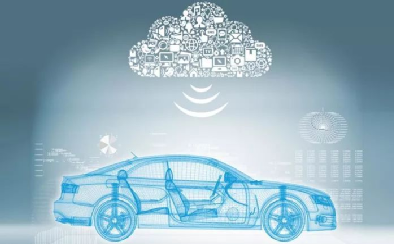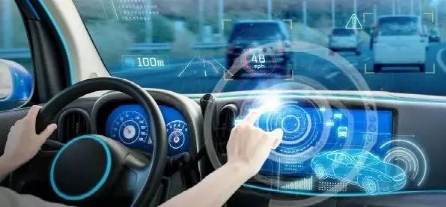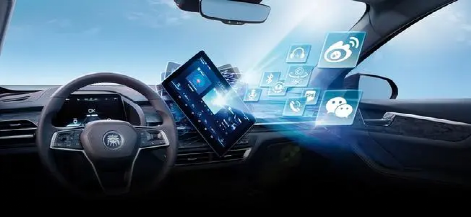Introduction
In the rapid development of smart cars today, if you go to a 4S store to buy a new energy vehicle, the salesperson will introduce to you that cars nowadays can be updated with new applications just like phones, and as the car infotainment system becomes more and more mature, consumers can experience the new features developed by the manufacturer at any time, which is still attractive for car enthusiasts.
However, such a convenient “OTA” technology has received regulatory restrictions from the government recently. In the “Opinions on Strengthening the Management of Intelligent and Connected Vehicle Production Enterprises and Products Access” issued by the Ministry of Industry and Information Technology, it emphasized that “without approval, new or updated automatic driving functions cannot be added or updated through online or other software upgrade methods.” So, can “OTA” technology which seeks survival in the cracks really keep the vehicle always up-to-date and constantly upgrading the features? Facing strong government supervision, how can manufacturers reasonably apply this technology for the benefit of consumers? This article will delve into the “OTA” field which all manufacturers are focusing on.
What is OTA?
“OTA” stands for Over-The-Air Technology, which is a wireless downloading technology that downloads the latest applications or systems from remote servers through a wireless network to upgrade the vehicle operating system. Because the update is done over the air using a wireless network, car owners only need to connect to the wireless network to quickly update and upgrade the infotainment system, which is very convenient.

For mobile applications, people may have long been accustomed to updating their mobile applications anytime in the app store. Nowadays, smart cars are like mobile devices on four wheels; everything that can be done on a mobile phone can also be done on a smart car infotainment system. Nowadays people spend a considerable amount of time in cars, and the large infotainment screens provide passengers or car owners with a more vivid human-computer interactive environment. Consumers are also happy to use in-car applications during long driving trips. For manufacturers, as they increasingly want to make cars smarter and develop smart cars in the direction of high-end technology, “OTA” is definitely the only way and a battleground for all manufacturers.
The Role of OTA
So what are the functions of “OTA”? What can it provide to consumers that makes manufacturers push this new technology so hard? In my opinion, the current “OTA” has three main functions: fixing known bugs, adding new features, and retaining user loyalty.
Fix Known BugsThe current in-car systems are becoming increasingly sophisticated and supporting a growing number of applications, but ultimately, the hot trend in the smart car industry only started in recent years. In such circumstances, immature car applications will still encounter many system or application bugs. At this point, manufacturers will have two options: one is to release the product first and then iterate to fix known bugs, and the other is to delay the release cycle. However, in today’s rapid development of smart cars, delaying even one step means falling behind competitors. Unless absolutely necessary, no manufacturer is willing to postpone the product release cycle.
Therefore, in this situation, as long as the known product system bugs are not enough to affect user experience, most manufacturers will release the product first and then iterate to update. Before the emergence of “OTA” technology, system updates had to be carried out by car owners driving to 4S stores for flashing. However, such update frequency is definitely not enough. Some minor details or trivial updates cannot make consumers go to update these functions, and over time, consumers cannot get the latest applications, and the products laboriously developed by manufacturers may not benefit old customers. This is where the role of “OTA” comes in. Manufacturers can push every minor problem that they fix to consumers remotely so that car owners can update to the latest version anytime as long as they have network connections. This is very convenient for both new and old customers and can be said to be a good way for manufacturers to maintain old customers and always establish their brand reputation.
Adding New Features
The addition of new features has resulted in the current car manufacturer’s habit of stacking hardware on smart cars and doing hardware redundancy. Although these hardware systems do not provide great functions at present, with the update of software algorithms, they can improve functions like assisted driving and information entertainment systems, which is very tempting for car owners. For example, XPeng’s NGP autonomous navigation driving system is updated through OTA, enabling car owners to enjoy one of China’s most advanced assisted driving systems.However, after the introduction of new policies, the system upgrade for car owners may not be as convenient as before. With the increased government regulatory efforts, the content updated during each upgrade will be strictly limited. Approval from the government for upgrades related to highly advanced driver assistance systems may not be easy. Additionally, the government approval process will inevitably take time, and the longer upgrade process may make the consumer’s experience with new technology lengthy. Safety always comes first, though, and stricter government supervision may be a good thing. This will make some more radical auto companies more cautious in deploying new technologies, and consumers can enjoy the driving pleasure brought about by mature driver assistance technologies with greater peace of mind.
Maintaining User Stickiness
In the traditional automotive sector, selling a car marks the end of the transaction. Apart from periodic maintenance visits to the 4S shop, car owners do not engage in any other deep communication with the automaker. However, new car manufacturing entities think differently; they pay close attention to the user experience and user stickiness. NIO and Li Auto are two such companies, which actively organize offline gatherings for their car owners to increase interaction. They also periodically push new functions to users through OTA, allowing users to constantly feel valued. This helps to solidify the company’s brand name through positive oral communication, attracting not only existing customers but also new ones.
Technical Difficulties of “OTA”
So, we have talked a lot about the benefits of “OTA,” but do not assume that the current “OTA” technology is already mature and free from any issues. To be sure, “OTA” is certainly a future development trend, but currently, there are still some security risks and technical difficulties. First of all, upgrading, to some extent, is equivalent to importing the vehicle from one state to another. It is inevitable that some errors will occur during this process. For example, at one point, an electric car from a certain brand stopped in the middle of the road for one hour during OTA before it resumed. Consumers and manufacturers bear responsibility in such situations. Secondly, continuously updating versions may lead to unstable new versions, and manufacturers need to be able to take timely rollback measures to avoid affecting the user experience.

Furthermore, there may be a risk of network hijacking during the OTA process. Manufacturers need to ensure end-to-end security, which means that from the beginning of the development to the final product, all data channels are secure, data is encrypted, the developed software has undergone security level verification, and even the developer’s identity has also undergone security verification.Translate the following markdown text in Chinese to English markdown text in a professional way, retaining HTML tags inside markdown, outputting only the result.
In summary, the new policy has given “OTA” even stricter constraints. Safety is always the top priority of driving, whether it is passive safety or active safety. For suppliers and automakers, ensuring user safety and system security when using “OTA” technology is the basis for the future widespread application and benefit to the public.
As shown above, “OTA” can indeed make vehicles “new” in the short term, just like current smartphones. Upgrading system applications can satisfy daily usage needs in one or two years, provided there is enough memory available. However, in the long run, with the rapid iteration and update of algorithms, even powerful “OTA” technology is probably helpless if the purchased car has not installed the hardware or sensors needed in advance.
At the same time, the new policy represents the government’s need to set a standard for automakers when designing innovative products. They cannot do whatever they want, nor can they let consumers become experimental subjects of some radical or adventurous designs. Therefore, the new policy ensures product consistency and requires that automakers ensure that their products comply with national laws and regulations before implementing online upgrade activities.
We can have high expectations for “OTA” technology, but at the same time, we should not blindly believe in sales traps set by manufacturers. For consumers who are interested in new technology, they can decide whether their own car needs so much hardware to be buried according to their actual needs, and whether there is really such a high demand for application upgrades in the future, so as not to fall into the marketing traps of manufacturers.

This article is a translation by ChatGPT of a Chinese report from 42HOW. If you have any questions about it, please email bd@42how.com.
